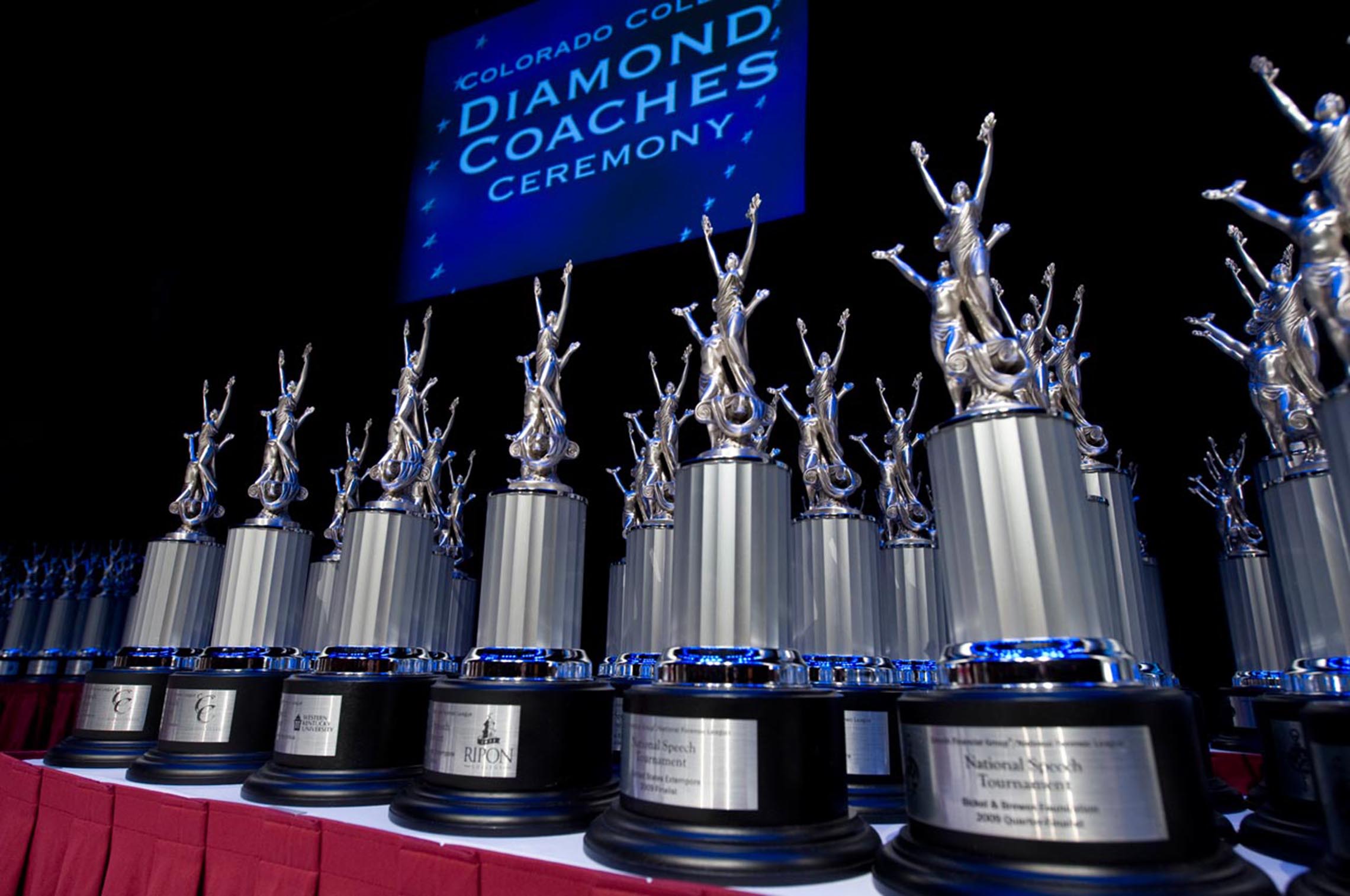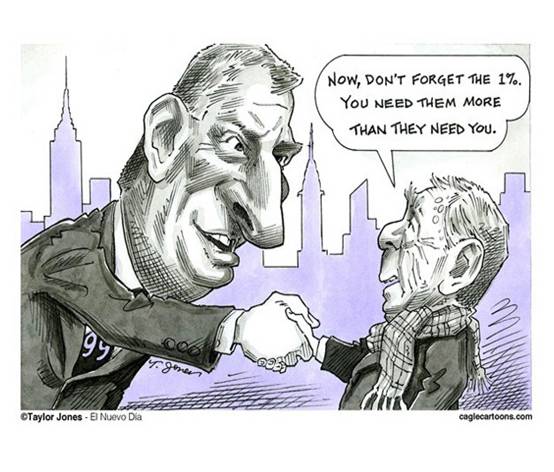[fblike]
by Logan Scisco
At a few select tournaments throughout the year, you may encounter rounds that are different from what you are accustomed to. Instead of drawing three questions and choosing one to speak on, some tournaments may give you a copy of The New York Times and have you draft your own question from the paper. Others may have you examine editorials, and a few may have you draw three political cartoons and choose one to speak on in the round. Extempers are usually befuddled by changes to their normal environment and even good extempers stumble in these “experimental” rounds. This strategy piece will examine approaches to political cartoon rounds so that if you ever come across one you will be comfortable and ready to compete.
What is the Political Cartoon Round?
Extempers who normally read any type of newspaper or magazine will notice the use of political cartoons to communicate messages. Cartoons have been a mainstay of global politics for centuries and Thomas Nast, a famed American cartoonist, played an important role in bringing down the corrupt Tweed Ring in New York City during the Gilded Age. Visual images work wonders in countries where a large number of people are illiterate and they can also serve to mock the political elite. Due to their ridiculous content with exaggerated portrayals of political figures, political cartoons are great attention getting devices (AGDs) in speeches.
In a typical political cartoon round, you will be given a selection of multiple cartoons. Sometimes this will function as a blind draw, where you will draw three sheets of paper, each containing a printed cartoon. Other times you may encounter a tournament where you are handed the cartoon and have no choice at all. Once you select your cartoon, the purpose of the round is for you to write your own question based on the content of the cartoon and answer it in the speech. What makes these rounds fun is that you get to write your own question, so you have no one to complain to but yourself if you do not like how your speech turns out.
Prepping a Speech for the Political Cartoon Round
One of the most crucial parts of the political cartoon round is your selection of the cartoon that you are going to speak on (assuming that the tournament allows you to do a blind draw). You must consider whether you understand the message that the cartoon is sending and whether you can create a question about it. Some cartoons are ridiculous and funny, but remember that you are not going to be solely using the cartoon as an AGD. You need it to express a message that you can twist into a seven minute speech. If you are unaware of what political figures look like, this round will be your worst nightmare since you may not be able to pick up how some leaders are portrayed. Therefore, make sure you can identify all of the major features in the cartoon and its message before you select it for the round.
As you look over your cartoon, you should first think big picture. What is the setting of the cartoon? Are there domestic or foreign leaders in it? If so, what are they doing and where are those leaders from? Is the cartoon expressing something positive or negative about a certain situation? You need to consider all of these questions when weighing what you can do with the cartoon in your speech. Let’s look at some examples (taken from the 2014 Kentucky Educational Speech and Drama Association State Tournament:
In the cartoon above, the viewer can easily determine that the setting is Thailand based on “Thailand” being printed on the automobile. If you look carefully at the women inside of the vehicle, you will notice that on her right arm is the name “Yingluck,” which clues you in that she is a drawing of former Thai Prime Minister Yingluck Shinawatra. At this point, you need to examine what the other figures in the cartoon are doing. They are making off with parts of the vehicle and one of them is demanding that Yingluck give him the steering wheel. There is a lot of symbolism that can be taken from these actions. First, you can argue that the men in white coats (it would have helped if the cartoonist had drawn them in yellow shirts to represent the yellow faction of Thai politics) are tearing apart the country, symbolized by the car, piece by piece. Since the car no longer has wheels, it cannot go anywhere, which means that Thailand is currently stuck. The steering wheel that Yingluck is being told to give up can be seen as the direction that the country is going in. If Yingluck relinquishes the wheel, her opposition, portrayed as lunatics and bandits, would take over the country.
This image was not selected by any of the extempers at the KESDA State Tournament. This is probably due to the fact that they had no idea who was depicted in this image. Who is shown in this picture? The larger figure on the left is New York City Mayor Bill de Blasio, while the smaller figure on the right is former Mayor Michael Bloomberg. First, you can see that the two men are not treated equally in the picture. De Blasio is bigger, which can symbolize his growing stature in New York City politics and how he is the new man in town. Bloomberg also looks quite unhealthy in this picture, which is not how he looks in real life. If you look closely at de Blasio’s coat, you will notice that he has “99” within it. This symbolizes de Blasio’s campaign to represent the interests of “99% of New Yorkers” and his attacks on the city’s rich. Bloomberg, whose wealth makes him part of the 1%, nervously tells de Blasio in the cartoon that he needs to care about the 1% by offering a stern warning that he needs them more than they need him. Thus, the big idea of this image is the passing of political power and a small indictment of the politics of class warfare. In this image, your question could really write itself based on the dialogue: “Does Bill de Blasio need the political backing of New York City’s 1%?”
As these two examples illustrate, you have to detect clues within the cartoon to get its complete message. After figuring out the message, you need to go about crafting a question for your speech that is based on the cartoon. You should do your best to make your question somewhat difficult, but not so difficult that you cannot answer it or do not feel comfortable answering it. As a result, framing a question with difficult first words like “What,” “How,” and “Why” is better than first words like “Can,” “Is,” “Will,” which require a yes or no answer. Yes or no questions can still be difficult, but they need to tie to a specific idea (e.g. the question above is yes or no but ties de Blasio in with New York City’s 1%). When judging this round, the question that the extemper creates factors into my judging of the round. I am more likely to award an extemper for crafting a difficult question and answering it than I am someone that takes the “easy” way out. Also, your question needs to relate to the idea of the political cartoon in some way. For example, if you try to turn the Thailand political cartoon into a question on Southeast Asian politics there is a problem. The same can be said if you try to link the Bill de Blasio cartoon into a possible presidential bid in 2016 (and good luck finding sources on that one!).
Here are some examples of solid questions based on the political cartoons above:
- How can Bill de Blasio win over New York City’s 1%?
- Will Bill de Blasio’s social and economic policies drive the 1% out of New York City?
- Why has Yingluck Shinawatra aroused the ire of Thailand’s yellow forces?
- How can Yingluck Shinawatra regain the wheel in Thailand? (This would require you to set up the idea of the wheel as a symbol of political power to steer the country in the right direction)
Delivering Your Speech
Before beginning your speech, it is important to share your question with the judge(s). Remember, the judge probably got a packet of the available cartoons, but they have no idea what question you created from your chosen cartoon. They will really appreciate it if you identify which cartoon you chose and then tell them what your question is. This will allow them to sit back and enjoy your speech instead of hastily scrambling down the words of your question when you get to that part.
Political cartoon rounds will typically see extempers use the cartoon as their AGD. Judges see the same behavior in Impromptu rounds when speakers have a quotation as a prompt and decide to start with the quotation. It is best to proceed with an AGD that fits the question you wrote. When you are giving background information on the question that is the time you want to introduce the cartoon. For example, for the question on Thailand you should break down the country’s political problems and then link that with the message of the cartoon. Something along the lines of “The nation’s yellow forces, those who are conservative and support the Thai monarchy, oppose Shinawatra. The cartoon provided in this round illustrates these forces pillaging Shinawatra’s vehicle, which in this case represents the Thai government.”
The rest of the round should proceed as a normal extemporaneous speech, with your chosen two or three points of analysis. If you can, try to work in other elements of the cartoon as you go. For the Thailand cartoon, having car parts analogies might be beneficial and appear clever (e.g. the wheels of the country are coming off, yellow forces want to drive the country, the country’s economic engine is stalled). For the de Blasio cartoon, you could joke about his big appearance or how sickly Bloomberg looks. You could also point out the 99 number in his jacket and what that is significant of. In other words, do not forget about the cartoon after the introduction. It was why you were forced to write a question for the round, so try to incorporate it where appropriate.
Political cartoon rounds can be a lot of fun as they force you to be creative and read the meaning of the cartoon. You are still crafting a seven minute speech, but this is a round where you get to write the question. Write a good question that clearly links to the cartoon, discuss the cartoon’s symbolism throughout your speech, and make sure to effectively answer the question you wrote. If you follow these steps, you will master political cartoon rounds and have another ace up your sleeve to defeat your competition.


